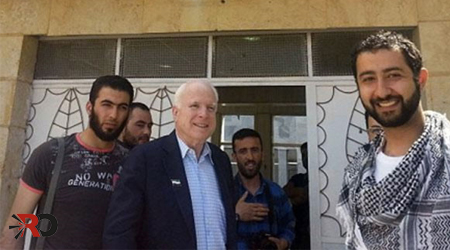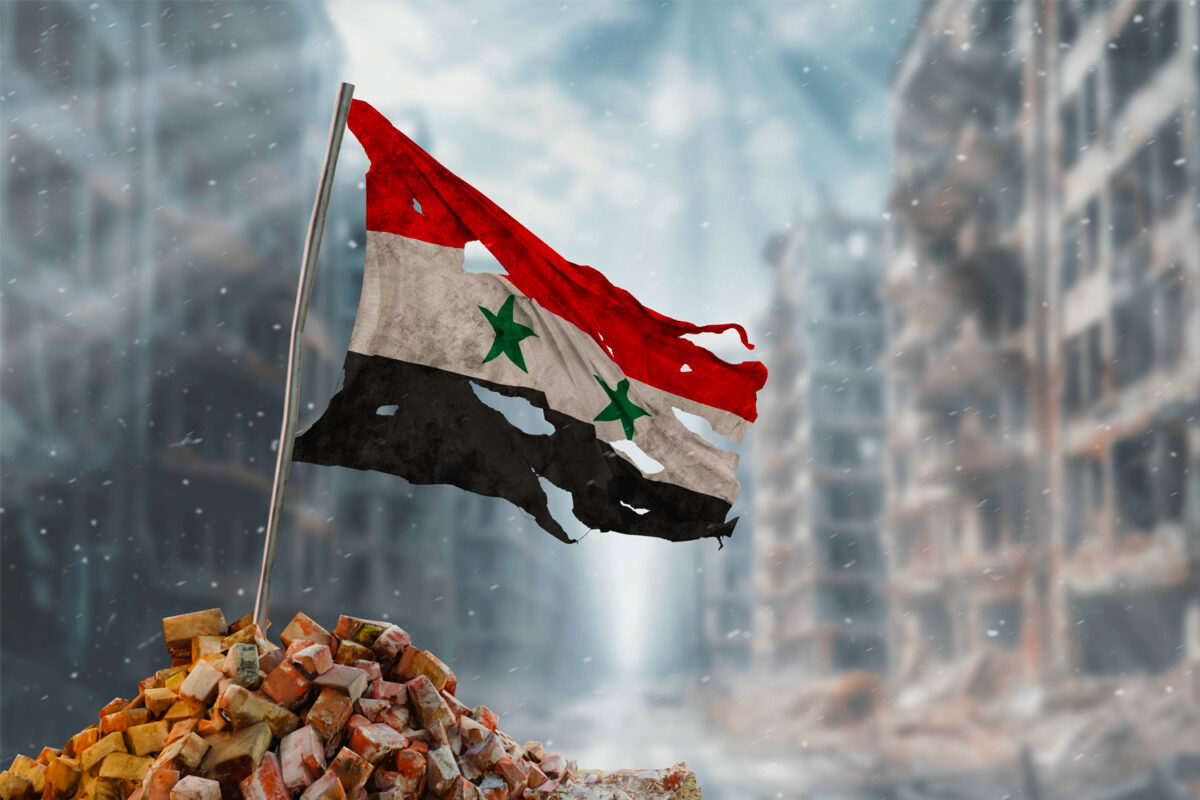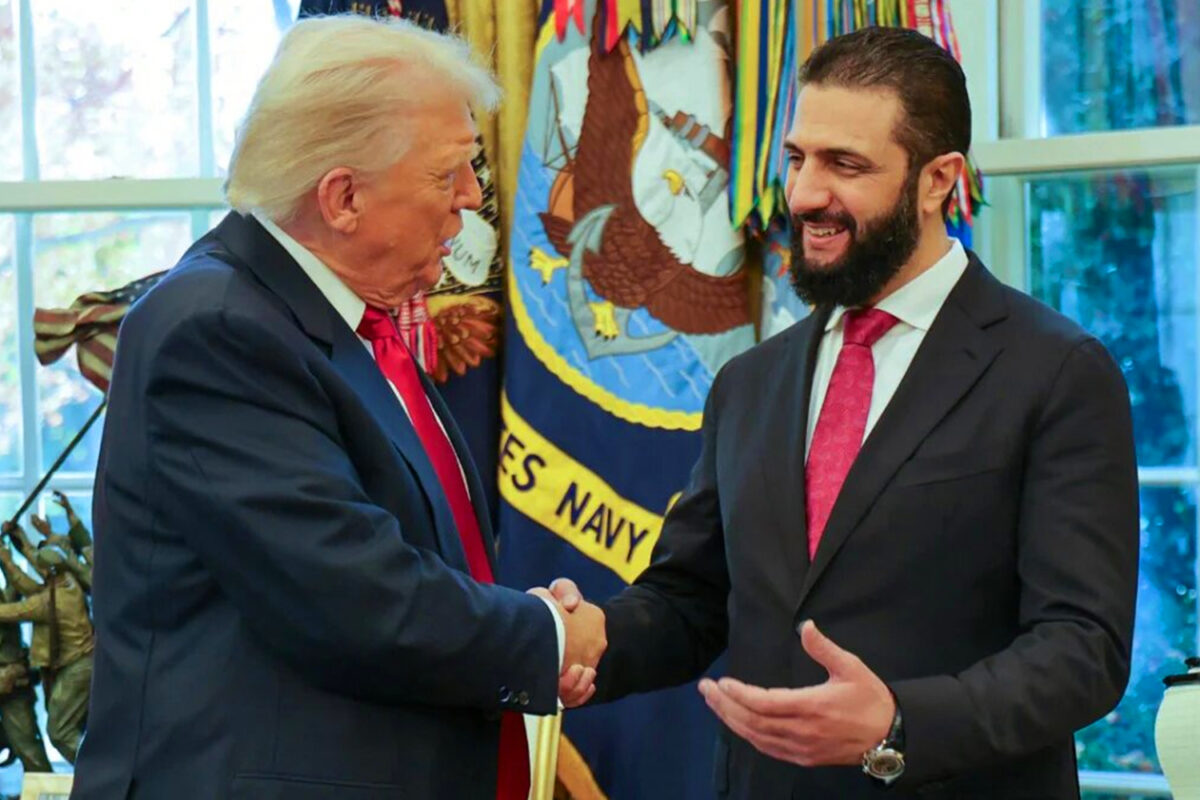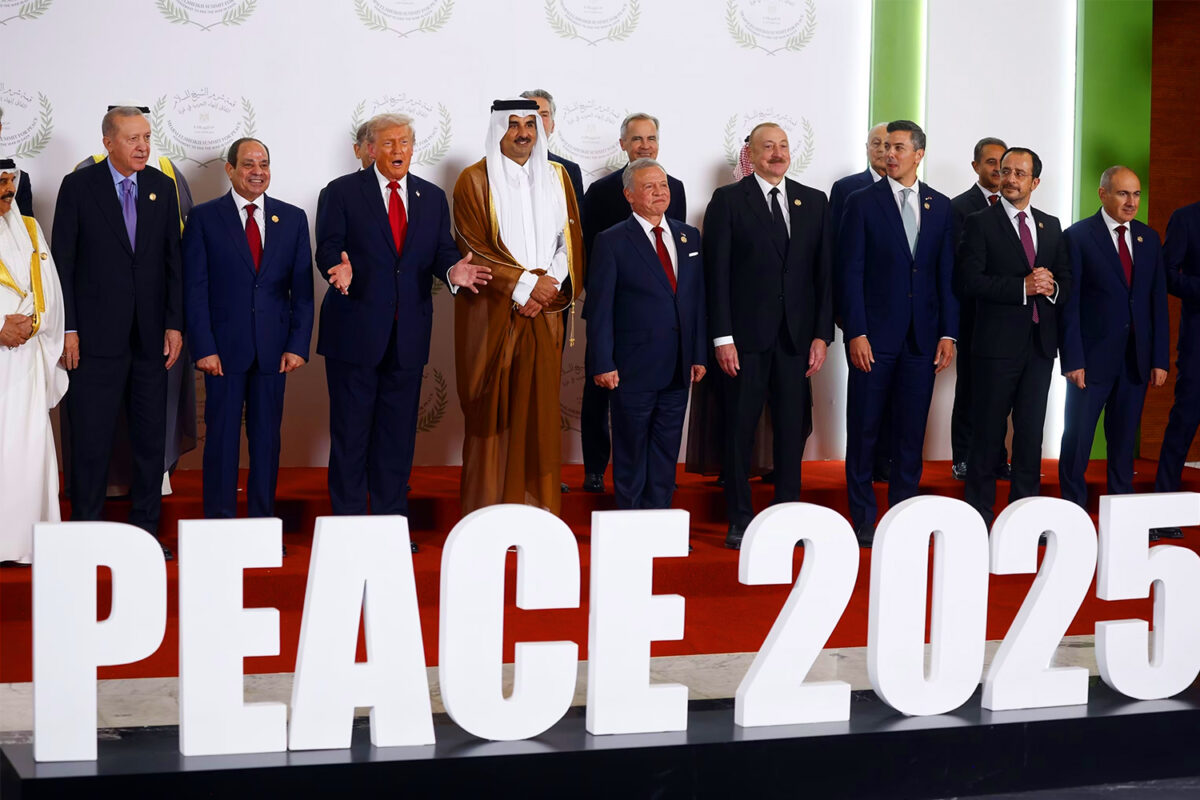By Adnan Khan
Janes intelligence, the prestigious global security firm released new data recently that highlighted the number of operations conducted by ISIS and the Bashar al-Assad regime. It found around 64% of verifiable ISIS attacks in Syria this year (November 21 2013 – November 21 2014) targeted other rebel groups. Just 13% of ISIS attacks during the same period targeted al-Assad’s forces. It also found al-Assad’s counterterrorism operations, more than two-thirds of which were airstrikes, skewed heavily towards groups whose names were not ISIS. Of 982 counterterrorism operations for the year, just 6% directly targeted ISIS.[1] ISIS actions ever since its emergence has led to much suspicion of coordination between them and the Syrian regime. At RO we continue to receive numerous questions on the possibility of ISIS being a US proxy and the suspicion of collusion between ISIS and the al-Assad regime. Due to this we thought it would be a good time to analyse such claims, especially now that empirical evidence exists of ISIS and al-Assad’s forces mainly avoiding each other.
The origin of ISIS is rather murky and is probably the reason many have suspicions over them. All of the senior leaders of ISIS were gathered in Camp Bucca in 2004 in the midst of the insurgency against coalition troops during the Iraq war. The UK’s guardian conducted an exclusive and lengthy insight into ISIS on 11 December 2014 and interviewed senior ISIS commanders. ISIS commander, Abu Ahmed confirmed the US-run prison provided an extraordinary opportunity. “We could never have all got together like this in Baghdad, or anywhere else. It would have been impossibly dangerous. Here, we were not only safe, but we were only a few hundred metres away from the entire al-Qaida leadership.”[2] Abu Ahmed explained how Camp Bucca was organised. Most of Baghdadi’s fellow prisoners – some 24,000 men, were divided into 24 camps. The prison was run along strictly hierarchical lines, down to a Teletubbies-like uniform colour scheme which allowed jailers and captives alike to recognise each detainee’s place in the pecking order. As ISIS rampaged through the region, it has been led by men who spent time in US detention centres during the American occupation of Iraq. According to Hisham al-Hashimi, the Baghdad-based analyst, the Iraqi government estimates that 17 of the 25 most important Islamic State leaders running the war in Iraq and Syria spent time in US prisons between 2004 and 2011.[3]
By December 2004, Baghdadi was deemed by his jailers to pose no further risk and his release was authorised. “He was respected very much by the US army,” Abu Ahmed said. “If he wanted to visit people in another camp he could, but we couldn’t.[4] Effectively in prison, all of ISIS’s princes were meeting regularly. The most important people in Bucca were those who had been close to Zarqawi. But the question remains how ISIS shifted from a a gang in prison to the worlds premier militant organisation? This is where Saddam Hussain’s Ba’athists came into the equation, who lost everything when Saddam was ousted. By 2008 meetings between those who would form ISIS and the Ba’athists became frequent. In the Guardian insight Abu Ahmed, a senior commander of ISIS confirmed: “these meetings had become far more frequent – and many of them were taking place in Syria.”[5] Bashar al-Assad has a long history of arming and supporting Jihadi groups, for its own strategic interests. In May 2006, the US Department of Defence quarterly report, titled “Measuring Stability and Security in Iraq,” outlined: “…. Syria continues to provide safe haven, border transit, and limited logistical support to some Iraqi insurgents, especially former Saddam-era Iraqi Baath Party elements. Syria also permits former regime elements to engage in organizational activities, such that Syria has emerged as an important organizational and coordination hub for elements of the former Iraqi regime. Although Syrian security and intelligence services continue to detain and deport Iraq-bound fighters, Syria remains the primary foreign fighter gateway into Iraq…”[6]
There is more damning evidence of Syrian regime-ISIS collusion. The Guardian interviewed Major General Hussein Ali Kamal, the director of intelligence in Iraq, regularly, until his death in early 2014. One of his duties was to secure Baghdad against terror attacks. Kamal, who was diagnosed with cancer in 2012 and died earlier this year, authorised the Guardian journalist to publish details of their conversations. The Guardian journalist confirmed when he first met Kamal in 2009, he was poring over transcripts of recordings that had been made at two secret meetings in Zabadani, near Damascus, in the spring of 2009. Kemal confirmed in his interview with the Guardian that Iraqi jihadists, Syrian officials and Ba’athists from both countries from Iraq and Syria were brought together: “We had a source in the room wearing a wire at the meeting in Zabadani. He is the most sensitive source we have ever had. As far as we know, this is the first time there has been a strategic level meeting between all of these groups. It marks a new point in history.”[7] In March 2010, Iraqi forces, arrested an ISIS leader named Munaf Abdul Rahim al-Rawi, who was revealed to be one of the group’s main commanders in Baghdad, and one of the very few people who had access to the group’s then leader, Abu Omar al-Baghdadi. Iraq’s three main intelligence bodies, conspired to get a listening device and GPS location tracker in a flower box delivered to Abu Omar’s hideout. Abu Omar’s hideout had no internet connections or telephone lines – all important messages were carried in and out by only three men. One of them was Abu Bakr al-Baghdadi. The deaths of Abu Omar al-Baghdadi and Abu Ayub al-Masri vacated positions that were quickly filled by the alumni of Camp Bucca – whose upper echelons had begun preparing for this moment since their time in jail in southern Iraq. “For us it was an academy,” Abu Ahmed said, “but for them” – the senior leaders – “it was a management school. There wasn’t a void at all, because so many people had been mentored in prison.[8]
ISIS rise to infamy was its conquest of Mosul. Mosul, Iraq’s largest city after Baghdad is the provincial capital and boasts a population of around 1.8 million. The maths was simple. The Iraqi army had 250,000 troops, its enemy, ISIS, had somewhere around 1,500. The Iraqi army had tanks, planes, and American training. ISIS had never fielded a tank or a plane. In Mosul two army divisions were stationed in Mosul. This was around 30,000 troops, there were also 10,000 federal police, 30,000 local police and likely, some Iranian Quds Force officers. The question is how a force 15 times larger than the 1,500 individuals ISIS could muster defeated? Iraqi army officials were aware of an impending attack by ISIS. Lieutenant General Mahdi Gharawi, the operational commander of Nineveh province, of which Mosul is the capital, confirmed in multiple interviews that in late May 2014, Iraqi security forces arrested seven members of ISIS in Mosul and learned the group planned an offensive on the city in early June. Gharawi, asked Prime Minister Nuri al-Maliki’s most trusted commanders for reinforcements. Senior officers scoffed at the request.[9]
The attack on Mosul began on 6 June 2014, ISIS attacked Mosul from the northwest in convoys of pickup trucks. Battles inside the city proceeded for 3 days until soldiers deserted and fled. There are however many soldiers and security personnel, who in interviews confirmed, they did not desert – they were ordered to withdraw. Amir al-Saadi, a soldier from one of the Iraqi Army’s divisions in Mosul outlined what happened: “The army withdrew from Mosul and that withdrawal is the responsibility of the senior commanders. The officer in charge was sitting in his office when I came in with some other soldiers. He told us he had received orders to withdraw from the city as quickly as possible. When he said that, we really thought he was joking. But he wasn’t. So we went out and told the others about the orders. That was when we started leaving the base, after changing out of our uniforms into civilian clothes.”[10] Lieutenant General Mahdi Gharawi confirmed only three people could have given the final order: Aboud Qanbar, at the time the defence ministry’s deputy chief of staff; Ali Ghaidan, then commander of the ground forces; or Maliki himself, who personally directed his most senior officers from Baghdad. The secret of who decided to abandon Mosul, Gharawi says, lies with these three men. Gharawi says a decision by Ghaidan and Qanbar to leave Mosul’s western bank sparked mass desertions as soldiers assumed their commanders had fled. All the evidence points towards Mosul not being deserted, but orders being received by soldiers to leave the city, but also to leave their equipment behind. Malaki, since he emerged as Iraq’s premier, consolidated and centralised all the key ministries and departments into his personal office, therefore the decision to abandon the city could only have come from Malaki himself. This would weaken his standing considerably in Iraq and especially from his Shi’ah support base. He would only have done this if the pressure came from the US, as no-one had so much influence to force Malaki into a decision such as this. ISIS has fractured the insurgency in Syria through its actions since its announcement of a so-called “Caliphate”. The weapons and equipment and money attained from Mosul were the catalyst for this.
ISIS’s actions ever since it announced its “Caliphate” has caused a fracture in rebel unity. This is because the ISIS state is predicated on an exclusionary method of governance. ISIS maintains social control by eliminating all resistance. Many reports coming out from Mosul and in Syria are of descent being dealt with through punishments, including death. Baghdadi said the following about the Shi’ah: “Al Qaeda wants to forge links with the Shiites. They think the Shiites are their brothers even though they make takfir on all the sahabah and they believe the Quran is corrupted. Yet al Qaeda wants to forge links with them. When Isis takes a town either you leave shism or die. Isis cannot take jizya from them. They are a newly invented religion so no jizya can be taken from them.” Implementing Islam includes their understanding of the creed and as a result many have been accused of apostasy for taking different positions to them. Based on this, courts have been set up and any opposition to ISIS rule or verdicts has been viewed as rebellion and has seen individuals and groups punished with execution. When all the rebel groups were fighting the al-Assad regime and launching attacks on Damascus, ISIS focused on conquering territory, rather than fighting the al-Assad regime.
Many have long suspected collusion between al-Assad and ISIS. Analysis of the JTIC database on a regional level showed that there were 238 counterterrorism operations in Aleppo for the year through Nov. 21 — but just 14 of those targeted ISIS. In the ISIS stronghold of Raqqa, there were 22 counterterrorism operations but just half targeted ISIS. ISIS have spent most of the last few months fighting in Kaboni, which has very little strategic value and has zero al-Assad regime presence, rather than facing off in Aleppo which is under intense regime attack. Yusuf Abu Abdullah, one of the leaders of the Al-Mujaheddin Army in Aleppo, said when his fighters have attacked regime bases, they have come under separate attacks from ISIS. That’s forced them to withdraw and battle ISIS instead of Assad’s forces. Al-Assad’s air force not targeting the large camps operated by ISIS in several parts of the country, has been constantly pointed out by those on the receiving end of air attacks[11] and many defectors from the al-Assad army have pointed out several field commanders of ISIS were former military or intelligence officers of the Syrian army. Oil and gas sales between ISIS and the al-Assad regime has also been a regular occurrence.[12]
The US incursion back into Iraq and then to Syria has been very dubious. ISIS started from Iraq and has been constantly streaming across the Iraq-Syria border, they have been moving supplies in convoys of trucks but have not been targeted by the US. The US gave ISIS cover when it conducted strikes in Syria against a new dubious group known as ‘Khorasan,’ which officials say was plotting an imminent attack on US soil. Bizarrely, the history of the Khorasan was virtually non-existent, and US officials never mentioned the group until the week before the strikes began in Syria. Estimated at 50 fighters, the group suddenly became a huge pretext for military intervention, even though an air sortie on September 23rd 2014 reportedly killed 30 of them.[13] Andrew McCarthy, a former US federal terrorism prosecutor highlighted in the National Review magazine: “You haven’t heard of the Khorasan group because there isn’t one. It is a name the administration came up with calculating that Khorasan had sufficient connection to jihadist lore [so] that no one would call the President on it.”[14] Harakat Hazm highlighted the airstrikes were a significant US effort to destroy Jabhut al-Nusra, and a minuscule effort to destroy ISIS, and no effort at all to destroy al-Assad. This is very significant as Harakat Hazm, which is allied with the CIA-backed Free Syrian Army, was one of the first rebel groups to receive US anti-tank missiles. That effectively makes it one of America’s most trusted supposed allies in the Syrian conflict.
The US has attempted to thwart the uprising in Syria from the very first day it began. Whilst it was able to divert the other uprisings in the wider Arab spring, it has failed to do so in Syria where the people have maintained their Islamic orientation in almost apocalyptic conditions. Unable to cobble together a loyal opposition, US prisoners went on to establish ISIS which has achieved much more than the US was able to ever achieve. ISIS priority in Syria has been their conquest of territory rather than fighting the al-Assad regime, which has weakened the rebel opposition against al-Assad. During this period al-Assad has been sitting back and watching the rebels fight amongst each other in the north of Syria and launching strikes when the opportunity arises against a weakened rebel front. There is only one entity that has benefited from the rise of ISIS and what they have achieved and that is the US who was struggling in thwarting the uprising in Syria.
[2] http://www.theguardian.com/world/2014/dec/11/-sp-isis-the-inside-story
[3] http://www.theguardian.com/world/2014/dec/11/-sp-isis-the-inside-story
[4] http://www.theguardian.com/world/2014/dec/11/-sp-isis-the-inside-story
[5] http://www.theguardian.com/world/2014/dec/11/-sp-isis-the-inside-story
[6] http://www.defense.gov/pubs/pdfs/Master%20%20Mar08%20-%20final%20signed.pdf
[7] http://www.theguardian.com/world/2014/dec/11/-sp-isis-the-inside-story
[8] http://www.theguardian.com/world/2014/dec/11/-sp-isis-the-inside-story
[10] http://www.niqash.org/articles/?id=3461
[11] http://www.channel4.com/news/is-assad-isis-rebel-forces-iraq-syria






8 comments
Mohammed Naseer
29th December 2014 at 9:24 am
JIT – ‘Just in Time’ Movements that come into existence when a need exists to fulfil US objectives in geopolitical landscapes around the globe. TTP in AfPak region is another example of a JIT group, a shadowy group which came into existence when American objectives in Pakistan were facing resistance as can be seen by the following report :
The reluctance
of many ordinary foot soldiers to fight other Muslims in Waziristan, and the number of
desertions by Pak soldiers fighting against militants in the FATA district, would seem to
indicate a widespread sympathy with militant aims and ideology, and antipathy towards
western interference in Pakistan. Hassan Abbas, in his book Pakistan’s Drift into Extremism:
Allah, the Army and America’s War on Terror, emphasizes the alarming trend within the Pak
military that includes Pakistani pilots refusing to bomb militant strongholds, and units
surrendering to militant groups rather than fire on them. [1]
[1] Pakistan Security Research Unit (PSRU), Brief Number 64
Dr. Simon Ross Valentine
https://www.dur.ac.uk/resources/psru/briefings/archive/PSRU64.pdf
bakr
1st January 2015 at 10:53 pm
Your hizb-ut-tahrir analysis is not reliable due to the fact that the sources are from shia men and western propaganda media. Why are you so angry that a group has established khilafah before you. Should you not be happy??? May Allah punish you for publishing anti islamic propaganda against the khilafah state.
Shammaa
8th January 2015 at 10:47 am
khilafah isn’t just a decclaration fanboy. in sha Allah Allah will punish those who are wrongdoers.
Adnan Khan
2nd January 2015 at 7:56 pm
Salaams brother,
Jzk for your comment, do you want to comment about the actual facts and incidents mentioned in the article, such as all the senior commanders all being in camp Bucca, the events of Mosul or the fact that ISIS has rarely attacking the Assad regime and mostly other Muslims.
Masthan
5th January 2015 at 2:05 pm
Assallammu Alaikkum Brother Adnan Khan,
Find islamicsystem.blogspot.com a very useful information. With regard to this ISIS subject, i find it interesting to know about the facts but at the same time few of my friends who say that they working in the way of Islam and Hadees. Accordingly, i find too difficult to understand the truth based on your article of ISIS.
Killing of foreigner by ISIS is in accordance to the Islamic Hadees. As such that already ISIS has warned US to stop bombing at ISIS places otherwise such foreigner will be beheaded but they refuse to listen and continue to strike ISIS areas which resulted in beheading.
Would appreciate if you have some information on this.
Thanks,
Masthan
Mohamed AMOR
4th January 2015 at 2:30 am
This photo had no relation with ISIS!
McCain was visiting mainly Riyadh Chaqfa (MB) with Salim Idriss on the Turko-Syrian broders.
The guyes with McCain are Syrian Americans, are two agents who were at the origin of that visit.
We have images and recordings … no ties with ISIS!
Jazib
5th January 2015 at 5:24 pm
Mosul story sounds similar to that of Swat city of Pakistan.
TTP played the role of ISIS there and local police force worked similar to that of Iraqi forces by fleeing away from police stations.
Pingback: ISIS a US proxy? | fitnafiumma